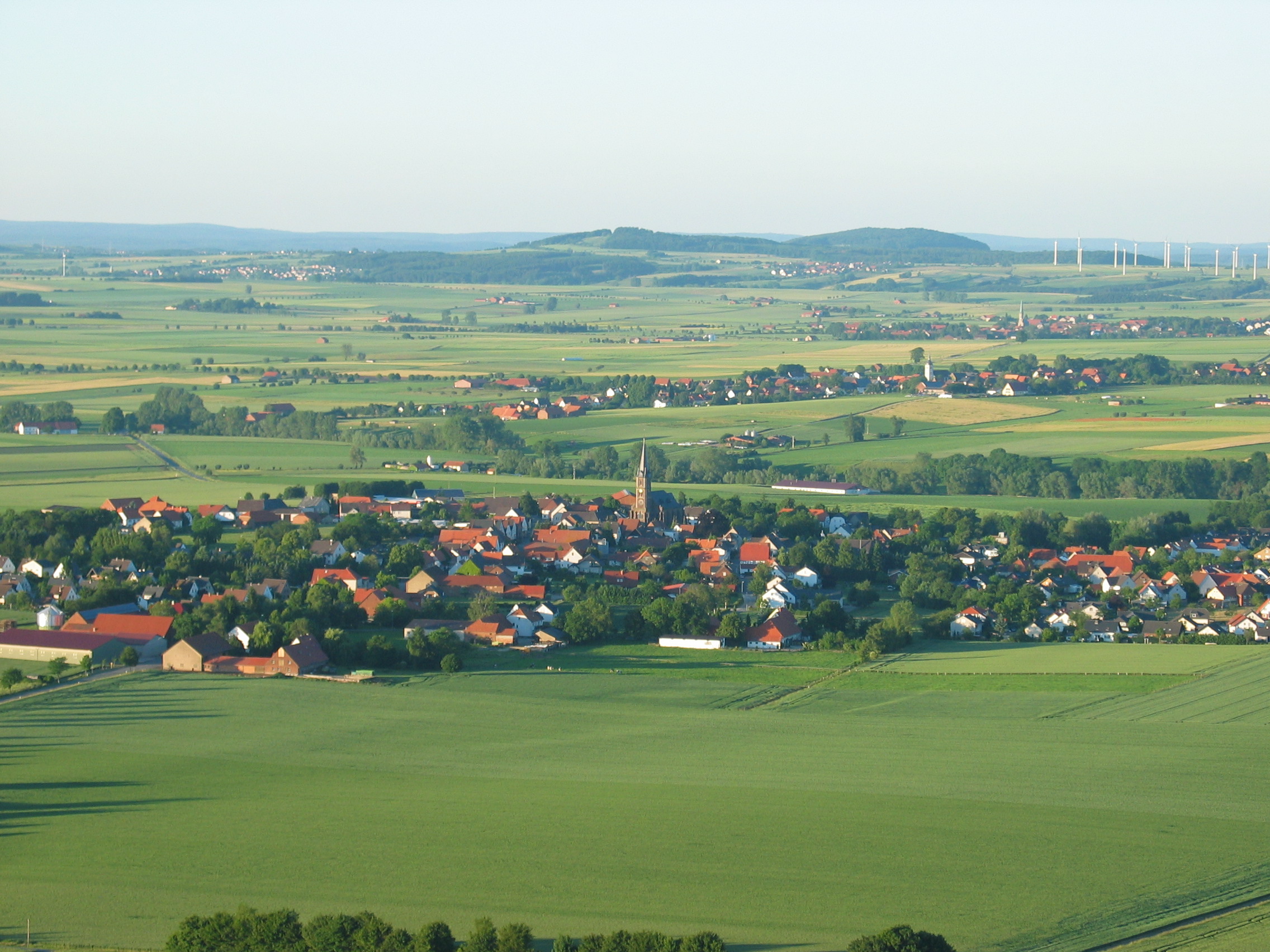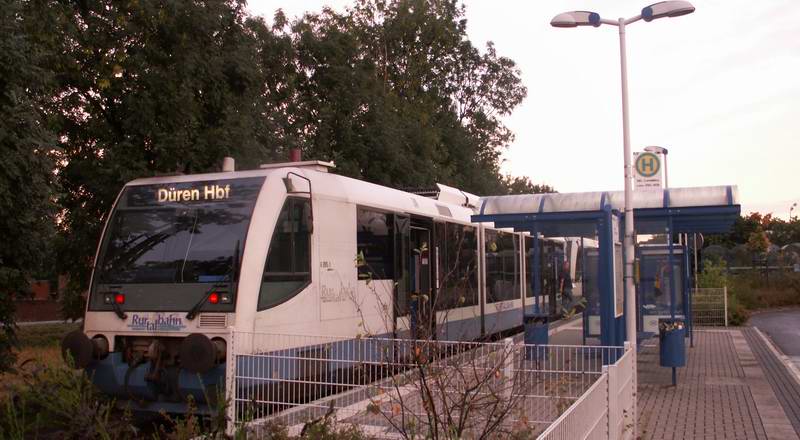|
RegioSprinter
The RegioSprinter is a German diesel railcar built by Siemens-Duewag for rapid regional railway services. Originally the RegioSprinter was designated as a Regional Combustion-engined Railbus (''Regional-Verbrennungstriebwagen'' or ''RVT'') by Duewag. Developed as prototypes for fast regional railway services on the plains, the RegioSprinter still has the fastest acceleration of any multiple unit or railbus in Germany. Due to several technical and conceptual defects, however, only very few were built. Based on their experience with the Regiosprinter Siemens developed its successor, the Desiro, which was initially marketed as the ''Regiosprinter 2''. In 1999, all the Vogtlandbahn vehicles were converted to meet tramway regulations (''BO Strab''), in order to be able to transfer to a tram line in the centre of Zwickau. Design The vehicles are designed with three sections. In the two, single-axled end modules are the driver's cabs and the drive units like those on trams. In the mi ... [...More Info...] [...Related Items...] OR: [Wikipedia] [Google] [Baidu] |
Duewag
Düwag or Duewag, formerly Waggonfabrik Uerdingen, was a German manufacturer of rail vehicles. It was sold in 1999 to Siemens with the brand later retired. History Duewag was founded in March 1898 as Waggonfabrik Uerdingen in Uerdingen and produced rail vehicles under the Düwag brand. After merging with Düsseldorfer Waggonfabrik in 1935, railway vehicles were built in Uerdingen, while the Düsseldorf plant produced mainly local traffic vehicles, namely tramway and light rail vehicles. In 1981, the company changed its name from Waggonfabrik Uerdingen to Duewag. Siemens acquired a 60% shareholding in 1989 before taking full ownership in April 1999. In 2001, the Düsseldorf plant was closed with production transferred to Uerdingen. Duewag vehicles were close to a monopoly market in West Germany, as nearly every tram and light rail vehicle purchased from the 1960s onward was built by Duewag. Products * Uerdingen railbus * Buffel (DM'90) *GT8 tramcar in various versions ... [...More Info...] [...Related Items...] OR: [Wikipedia] [Google] [Baidu] |
Uerdingen Railbus
The Uerdingen railbus (German: ''Uerdinger Schienenbus'') is the common term for the multiple units which were developed by the German firm of Waggonfabrik Uerdingen for the Deutsche Bundesbahn and private railways after the Second World War. These vehicles were diesel-powered, twin-axle railbuses of light construction. The diesel motors were built into the chassis underneath the vehicle. The VT 95 (later DB Class 795) and VT 98 (later DB Class 798) of the former Deutsche Bundesbahn in particular, are associated with this concept. These vehicles were employed in passenger train duties on branch lines where steam or diesel train operations were less profitable. Including the units built under licence, a total of 1,492 power cars were built from 1950 to 1971; and the total number of units, including trailer and driving cars, was 3,306. The majority of these vehicles were built by the Waggonfabrik Uerdingen. However, due to the large numbers ordered, vehicles we ... [...More Info...] [...Related Items...] OR: [Wikipedia] [Google] [Baidu] |
Calgary Transit
Calgary Transit is the public transit agency which is owned and operated by the city of Calgary, Alberta, Canada. In 2019, an estimated 106.5 million passengers boarded approximately 1,155 Calgary Transit vehicles. It operates light metro (LRT), urban tramway (in the downtown free-fare zone), bus rapid transit (BRT), para-transit, and regular bus services. In , the system had a ridership of , or about per weekday as of . History What would eventually become Calgary Transit began as the Calgary Street Railway on July 5, 1909, with twelve electric streetcars serving what was at the time a city of 30,000. This streetcar service expanded throughout the next thirty years (including the Depression) until 1946, when the company was renamed to Calgary Transit System as electric trolleybus vehicles began replacing the local streetcars. Eventually the electric trolley lines were phased out together — to be replaced by diesel buses. In 1972, CTS assumed its current name of Calgary ... [...More Info...] [...Related Items...] OR: [Wikipedia] [Google] [Baidu] |
Siemens Mobility
Siemens Mobility GmbH is a separately-managed company of Siemens, arising from a corporate restructuring effective 1 August 2018. With its global headquarters in Munich, Siemens Mobility has four core business units: Mobility Management, dedicated to rail technology and intelligent traffic systems, Railway Electrification, Rolling Stock, and Customer Services. History Innovations from the late 19th century, such as the world's first electric train, when Siemens & Halske unveiled a train in which power was supplied through the rails, and the world's first electric tram, with the implementation of 2.5-kilometer-long electric tramway located in Berlin, built at the company's own expense, cemented the use of electric power in transportation systems. In the following years, inventions such as the first electric trolleybus, mine locomotives, and the first underground railway in continental Europe (in Budapest), set the path from trams and subways to today's high-speed trains. Si ... [...More Info...] [...Related Items...] OR: [Wikipedia] [Google] [Baidu] |
Zülpich
Zülpich ( ksh, Zöllech) is a town in North Rhine-Westphalia, Germany between Aachen and Bonn. It belongs to the district of Euskirchen. History The town is commonly agreed to be the site with the Latin name of ''Tolbiacum'', famous for the Battle of Tolbiac, fought between the Franks under Clovis I and the Alemanni; the traditional date is 496, corrected in many modern accounts to 506. The battle is commemorated in the names of the Rue de Tolbiac and the Tolbiac Métro station in Paris. On 1 January 1969, the former municipalities of Bessenich, Dürscheven, Enzen, Langendorf, Linzenich- Lövenich, Merzenich, Nemmenich, Oberelvenich, Rövenich, Sinzenich, Ülpenich, Weiler in der Ebene, and Wichterich were incorporated into the borough of Zülpich. On 1 January 1972, Bürvenich, Füssenich, and Schwerfen (part of Veytal) were added. Sights * Zülpich Castle * Wassersportsee Zülpich Zülpich pordego Kölntor 1.jpg, Zülpich's Cologne gate Sinzenich Jü ... [...More Info...] [...Related Items...] OR: [Wikipedia] [Google] [Baidu] |
Börde Railway
A ''börde'' (plural: ''börden'') is a region of highly fertile lowland in North Germany, a "fertile plain". These landscapes often cover great areas and are particularly important for arable farming on account of their rich soils. These regions coincide closely with areas of flat, fertile loess soil and few trees. ''Börden'' are found in Germany, especially in the North German Old Drift region on the northern edges of Central Uplands. The resulting black earth soils are some of the best soils in Germany. Etymology These landscapes are restricted to, or concentrated on, those regions where the Eastphalian and Westphalian dialects are spoken. There are two opposing explanations for the name. According to one, the term is connected with the Old High German word ''giburida'' ("judicial district") or the plattdeutsch word ''bören'' ("to bear"). The ''börde'' in this context is seen as a district in which the inhabitants had to "bear" public charges, i.e. it was effectively a ... [...More Info...] [...Related Items...] OR: [Wikipedia] [Google] [Baidu] |
Linnich
Linnich is a town in the Düren (district), district of Düren in the state of North Rhine-Westphalia, Germany. It is located on the Rur, River Rur (Roer river), approx. 10 km north-west of Jülich. Economy Linnich is the home of Schweizerische Industrie Gesellschaft, SIG Combibloc, the specialist for Carton#Aseptic carton, aseptic carton packaging. On the same Industrial site Gascogne Laminates Germany is producing laminates packaging for the pharmaceutical industry. Town twinnings Since 1974, Linnich is twinned with the French town of Lesquin in the Nord (département), Nord département. Transportation Linnich has no direct connections to German Autobahns, but the exits Erkelenz-Süd of the Bundesautobahn 46, BAB 46, Titz, Jülich-Koslar or Aldenhoven of the Bundesautobahn 44, BAB 44 can be used. Linnich is connected to the Rurtalbahn since 2002, and has one station near the SIG-factory and one in the suburb Tetz. Culture and landmarks Museums * Deutsche Glasmalerei- ... [...More Info...] [...Related Items...] OR: [Wikipedia] [Google] [Baidu] |
Jülich
Jülich (; in old spellings also known as ''Guelich'' or ''Gülich'', nl, Gulik, french: Juliers, Ripuarian: ''Jöllesch'') is a town in the district of Düren, in the federal state of North Rhine-Westphalia, Germany. As a border region between the competing powers in the Lower Rhine and Meuse areas, the town and the Duchy of Jülich played a historic role from the Middle Ages up to the 17th century. Geography Jülich stands in the Rur valley on the banks of the river Rur. The town is bordered by the town of Linnich in the north, the municipality of Titz in the northeast, the municipality of Niederzier in the southeast, the municipality of Inden in the south, and by the municipality of Aldenhoven in the west. Its maximum size is 13.3 km from east to west and 10.9 km from north to south. The highest point in Jülich is in Bourheim, 110 m above sea level (excepting Sophienhöhe, an extensive artificial mountain made up of overburden from a nearby open-pit lignite ... [...More Info...] [...Related Items...] OR: [Wikipedia] [Google] [Baidu] |
Heimbach (Eifel)
Heimbach is a town in the district of Düren of the state of North Rhine-Westphalia, Germany. It is located on the river Rur, in the Eifel hills, approx. 20 km south of Düren. Heimbach has the smallest population of any town in North Rhine-Westphalia. The districts of the city are Blens (290 residents), Düttling (80 residents), Hasenfeld (1200 residents), Hausen (290 residents), Hergarten (600 residents) and Vlatten (1000 residents), which prior to 1972 were villages with their own administration. Between Hausen and Hergarten lies the hamlet of Walbig, and between Hasenfeld and Schmidt (City of Nideggen) is the hamlet of Buschfelder Hof, which formerly belonged to Blens. History Heimbach and the city's Hengebach Castle was the seat of the local noble family which inherited the County of Jülich in 1207, with Heimbach annexed to the County (later the Duchy) since 1237. After the fire of 1687 the city of Heimbach was rebuilt to house the town's population; however, th ... [...More Info...] [...Related Items...] OR: [Wikipedia] [Google] [Baidu] |
Düren
Düren (; ripuarian: Düre) is a town in North Rhine-Westphalia, Germany, between Aachen and Cologne on the river Rur. History Roman era The area of Düren was part of Gallia Belgica, more specifically the territory of the Eburones, a people who were described as both Belgae and Germani. It was conquered by the Roman Republic under Julius Caesar and became part of Germania inferior. Durum became a supply area for the rapidly growing Roman city of Cologne (Roman name Colonia Claudia Ara Agrippinensium). Furthermore, a few important Roman roads skirt Durum (including the road from Cologne to Jülich and Tongeren and the road from Cologne to Zülpich and Trier). By the 4th century, the area was settled by the Ripuarian Franks. The name ''villa duria'' occurred the first time in the Frankish Annals in the year 747. Frankish king Pippin the Short often visited Düren in the 8th century and held a few important conventions there. The Franks made of Durum a royal palace, from wh ... [...More Info...] [...Related Items...] OR: [Wikipedia] [Google] [Baidu] |





